Climbing roses and botanical arches make a beautiful pair! Beware, there are a few mistakes you must avoid though. Read on and find out!
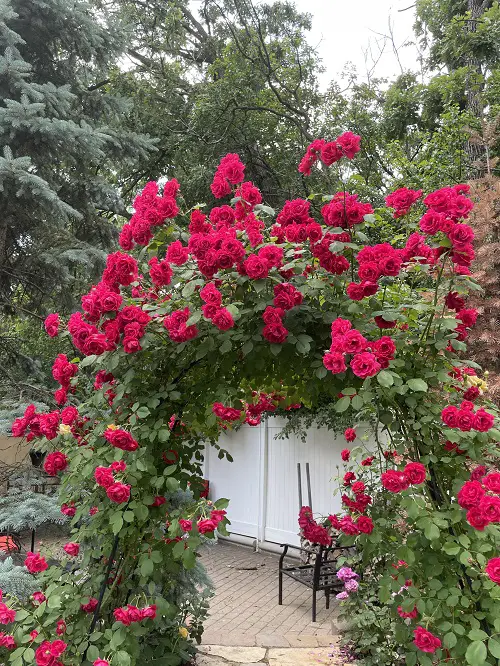
Climbing rose arches are stunning, but the planning, preparation, and care that goes behind each is often overlooked. Don’t worry; our guide will help you avoid common mistakes and grow a thriving, healthy arch of roses.
Mistakes to Avoid When Training Climbing Roses on Arches
1. Not Choosing Climbing Varieties
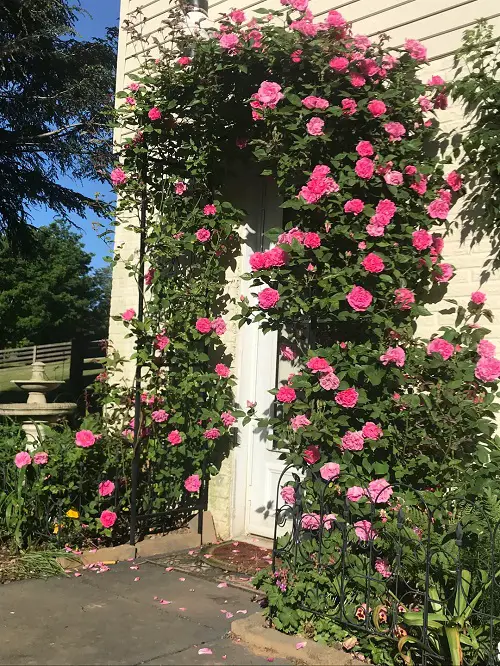
Roses are not just the blooms with thorny, erect bushes; there are many varieties with different growth habits. There are over 300 species of roses, which is unbelievable. That’s why choosing the correct one is essential when you’re growing them vertically!
For arches, you need to ensure that you choose a true climbing variety of roses (Rosa setigera) such as Rosa ‘Zephirine Drouhin’ and Rosa ‘New Dawn.’ Non-climbing varieties lack the strength or form to grow on vertical structures.
Note: Also check whether the variety is compatible with your location’s USDA zone, sunlight exposure, soil type, and other factors.
2. Weak Arch or Improper Erection
Roses portrayed as light and tender, in reality, weigh several pounds (in many cases over 100 lbs) when fully mature. A flimsy arch or one that is incorrectly installed will not be able to support that weight.
Keeping in mind the weight of the woody stems, foliage, and blooms, along with the additional burden of moisture, residue, and insects or pests, you would need an arch made of strong metal or reinforced wood. The foundation is also important. Use concrete as the base or erect it deep within the soil to ensure its stability.
Check that bolts, screws, and joints are rust-resistant and tightened regularly to keep the arch safe for years.
Tip: Remember that the main purpose of the arch is to allow humans to pass through the floral design, so the dimensions should be at least 7 feet tall and 3-4 feet wide.
3. Planting Too Close to the Arch
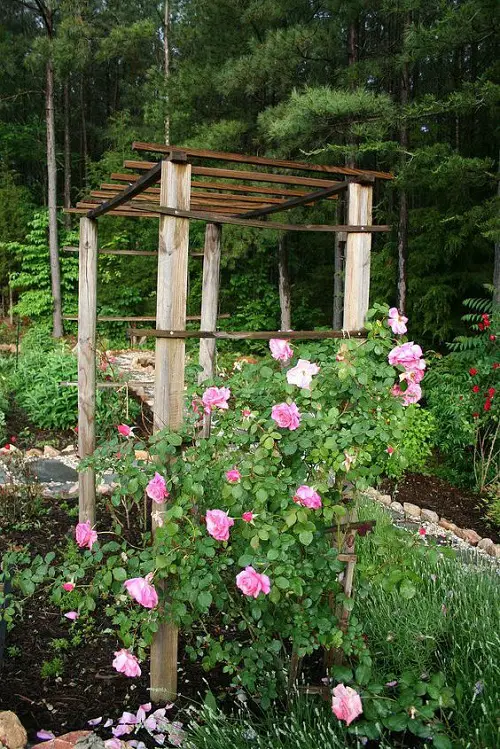
Firstly, understand that roses have fibrous, shallow, and spreading roots. A common blunder that many beginner gardeners make while planting young roses directly in the ground is keeping them too close to the arch structure.
In the early stages, this doesn’t look like a big deal, but as the plant grows, the pole or the foundation will obstruct the horizontal growth of the roots.
Plus, planting too close can also trap moisture around the base of the structure, leading to rust or base rot.
4. Planting Too Far from It
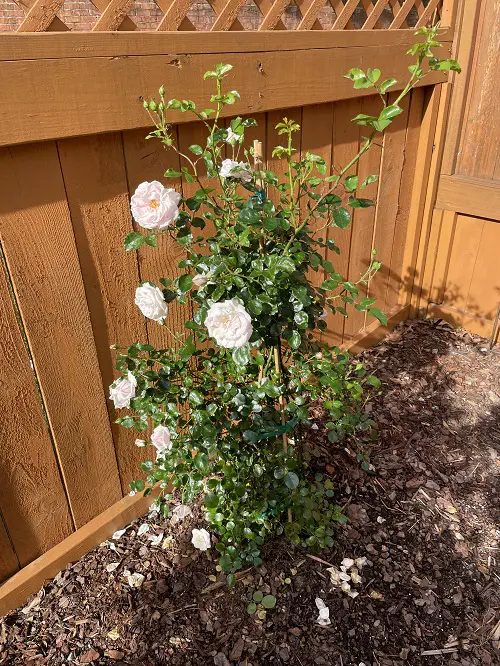
The complete opposite of the previous mistake. In this, gardeners plant their roses too far from the arch so that the young vines cannot be trained at the right time.
As mentioned before, climbing rose stems become woody with time, making them hard to manipulate, shape, or grow on the arch. They need to be trained as early as 5 weeks after planting (provided that the center vine is large enough), or else they begin to have a more rigid form that does not cooperate with the arch.
Ideally, roses should be planted around 12 inches from the base of the arch. This distance supports both root development and training flexibility.
5. Ignoring Basic Rose Requirements
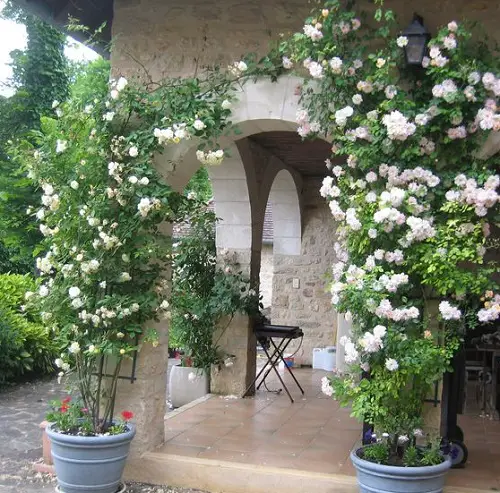
Even though you are not growing roses in pots or a regular garden scenario, they still require basic growth conditions. If you ignore their growing needs and provide an unsuitable environment, you can bid goodbye to your dreams of a lush rose arch!
A well-draining, loamy, and slightly acidic soil mix, deep, and thorough watering once or twice a week at the base, 6-8 hours of sunlight exposure, and the right USDA zone (4-10) are a must for a healthy rose arch.
Don’t forget to fertilize your roses during the growing season with a balanced rose fertilizer to boost blooms and maintain plant health.
6. Vertical Growth Kills Blooms
This mistake may sound illogical, but it has scientific reasons. Basically, if you let your climbing rose grow vertically along the arch, it will produce a lower number of blooms as flowers emerge from lateral branches.
Most of the plant’s energy is utilized to grow just the stem when trained vertically. Avoid this by twirling the vine along the arch, which will trigger the production of the lateral branches and, in turn, increase blooms.
Aim for a gentle spiral pattern or horizontal tie-offs to encourage side shoots and flowering.
7. Wrong Binding Products
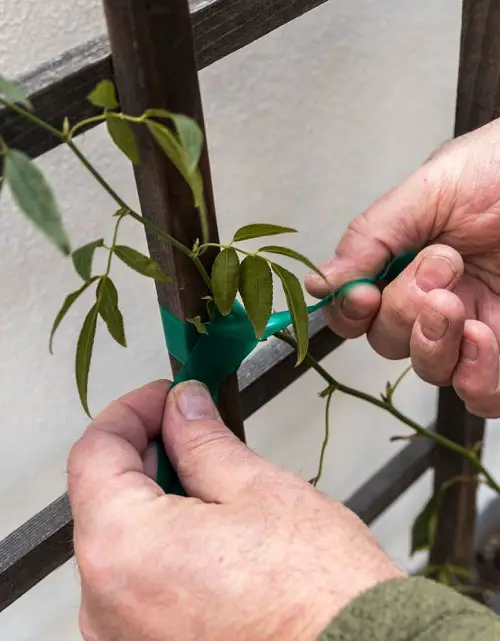
As we concluded before, training must start young, but using tight rubber bands, zip ties, or metal wires can damage the tender plant. These harsh materials will constrict the flow of nutrients within the plant or physically scar or even break the vines.
Use soft garden/plant ties in the initial stages. Once the plant becomes woody, using zip ties or other items is okay. Regularly check and loosen ties as the stems grow thicker to prevent constriction damage.
8. Improper Pruning and Deadheading
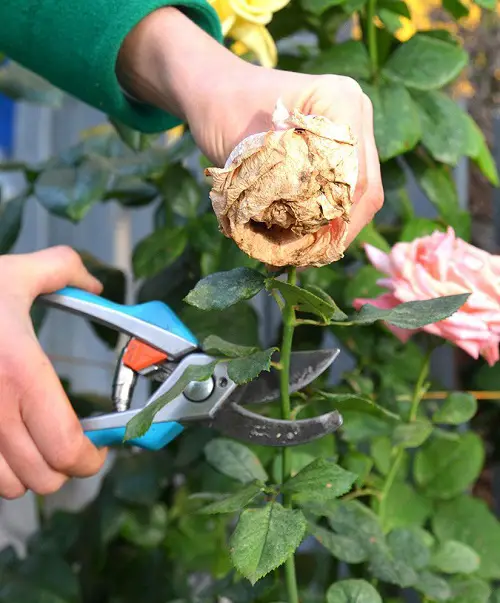
Hoarding all parts of your plant without regular trimming is a major no-no. Just like most flowering plants, snipping away spent blossoms can actually prolong the blooming season! It happens because deadheading tricks the plant into redirecting its energy into flower production instead of seed formation and saving the old ones.
Also, pruning is vital not only for the visual appearance but to allow proper airflow, prevent pests, and inspect damaged or dying parts of the plant.
Try pruning your plant in early spring and removing all yellow leaves, damaged branches, and old vines. Cut at a 45-degree angle about a quarter inch above a healthy outward-facing bud to guide new growth outward.
9. Ignoring Pests and Infections
Even though climbing roses are more resistant to infections and pests than their hybrid cousin varieties, they are not immune to them. Watch out for flea beetles, aphids, rose midges, and spider mites.
Do not ignore the tell-tale signs of an infestation or infection, such as yellowing or blackening of leaves, chewed edges, sticky residue on the surface, powdery patches, or leaf drop, and nip the problem in the bud.
Note: If the problem is out of hand and has damaged a major section of the plant, then completely cut away that part to prevent the spread.
Inspect your rose arch weekly for pests so you can treat issues early before they spread. And go with natural remedies like neem oil!
10. Asymmetrical Appearance
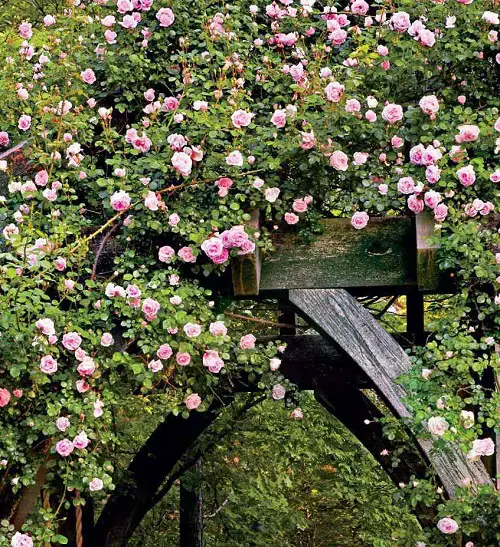
This issue is caused by either poor planning or greed. See, for a balanced and even spread of the vines across the entirety of the arch, plant roses at both ends of it simultaneously. The growth will be symmetrical and visually appealing.
Also, there is such a thing as too many roses! Do not overcrowd the arch by growing multiple vines on it. This will put stress on the structural integrity of the arch due to the weight.
The vines will also begin to compete with each other for survival, and a lack of nutrients in the soil will lead to the death or dull appearance of the plant.
Plan your color scheme and bloom times too, so the arch looks uniform and attractive throughout the season.
11. Not Trusting the Process
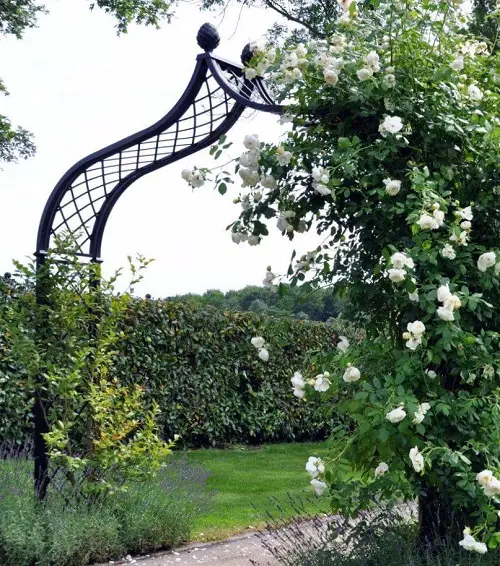
Even though the growth of climbing roses is rapid, you need to remain patient to let nature run its course. With a large arch, no vine can be able to fill it out completely in a single season. But that doesn’t mean you can give up on training the plant.
You must regularly bind and manipulate the new growth to achieve the desired form. It may even take a few years for the final look. It is a long-term commitment, so keep that in mind!
Note down your rose arch’s growth each season to track progress and make informed pruning and training decisions.
With careful planning and patience, your climbing rose arch can become a breathtaking garden feature.


